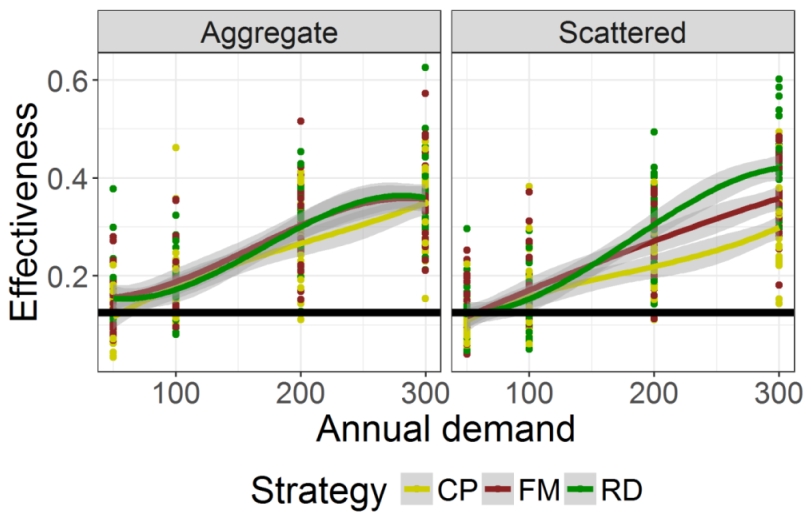The potential of agricultural conversion to shape forest fire regimes in Mediterranean landscapes

A new study published in Ecosystems explores whether new croplands and pastures allocated across the territory facilitate fire extinction activities. The authors found that more heterogeneous agro-forest mosaics increase fire suppression effectiveness and thus final burnt area decreases
In densely populated fire-prone regions, interactions between global change drivers, such as land-cover changes and climate change, may increase the frequency and severity of wildfires impacting forest ecosystems, thus diminishing their capability of provisioning key ecosystem goods and services for these societies. Yet, landscape mosaics play a crucial role in fire dynamics and behaviour. Here, we argue that promoting heterogeneous agro-forest mosaics could reduce the area affected by future fires. Specifically, we evaluated 24 landscape-scale management scenarios based on agricultural conversion, i.e. the creation of new agricultural land, that also explicitly incorporated fire suppression. Scenarios differed in the annual rate of such conversion, the spatial pattern (aggregate vs. scattered), and the location of new agricultural patches. To quantify the interactions between vegetation dynamics, fires, land-cover changes, and fire suppression, we coupled two spatially explicit models: a landscape dynamic fire-succession model and a land-cover change model. When applied to the Mediterranean region of Catalonia (NE Spain), new landscape mosaics favoured firefighting extinction capacity only after 15 years (on average) of cumulative land transformations. Agricultural conversion of at least 100 km2 year-1 was required to reduce total area burnt. A conversion rate of 200 km2 year-1 substantially improved fire suppression effectiveness, but subsequent conversion increases did not. When aggregated, new agriculture patches contributed more effectively to reduction in total area burnt and decreased the edge effect on remaining forest patches. Agricultural conversion in Mediterranean landscapes opens a new window for long-term spatial planning aimed at minimizing negative impacts of wildfire on forest ecosystems. These alternative strategies could help to develop landscape management practices in other fire-prone regions.
https://link.springer.com/article/10.1007/s10021-019-00385-7




